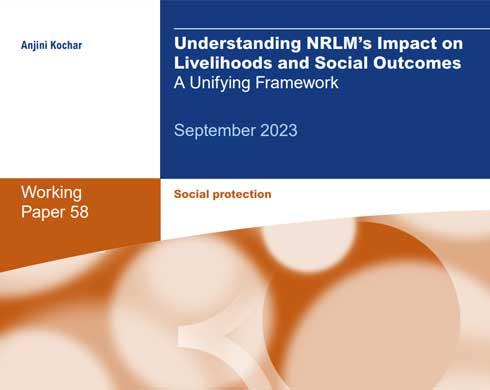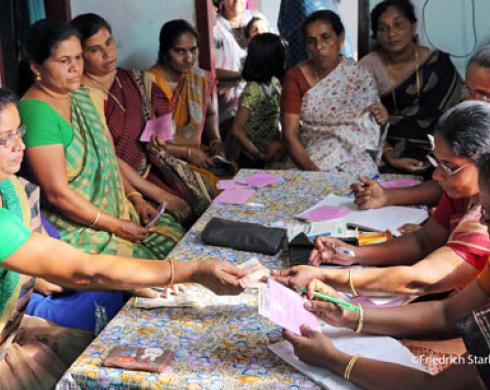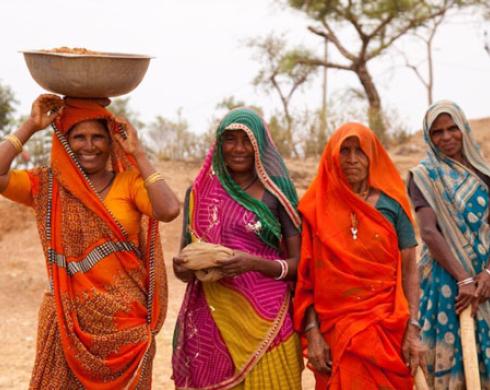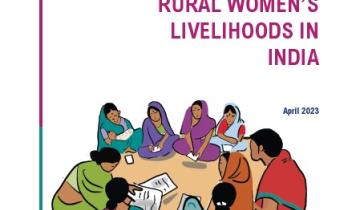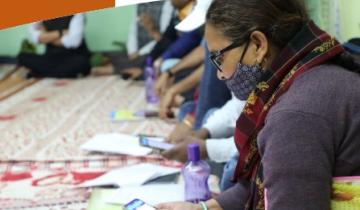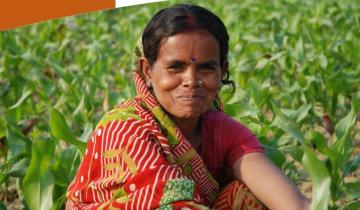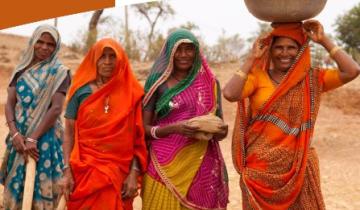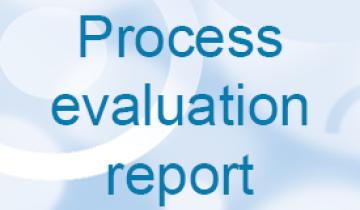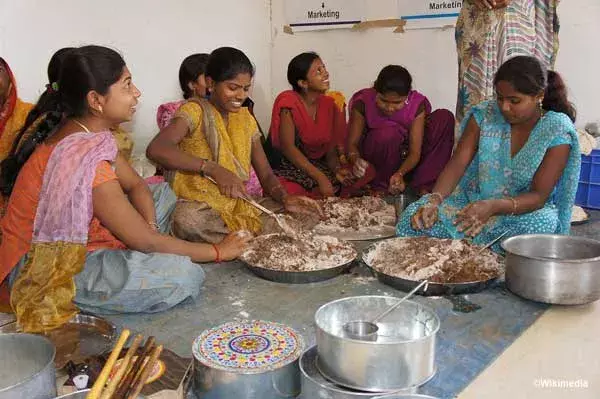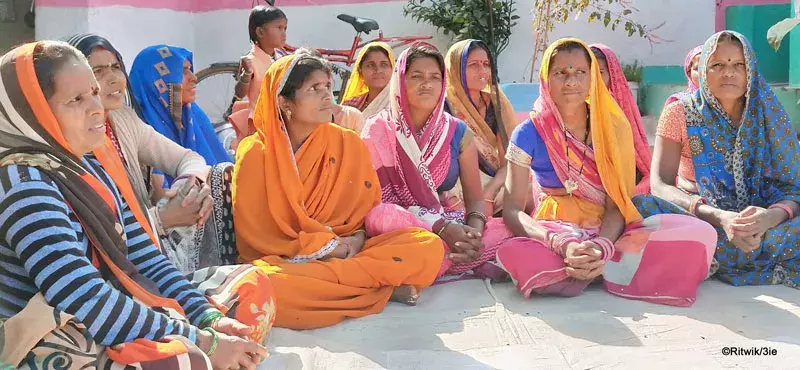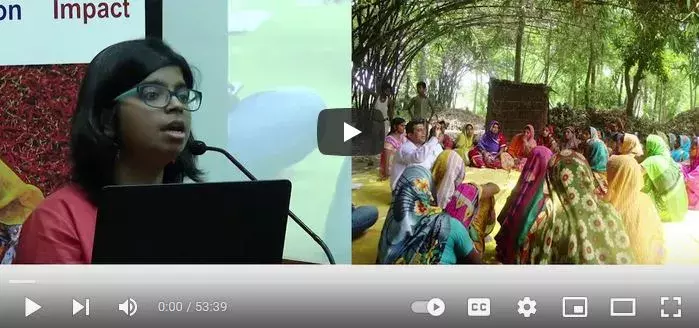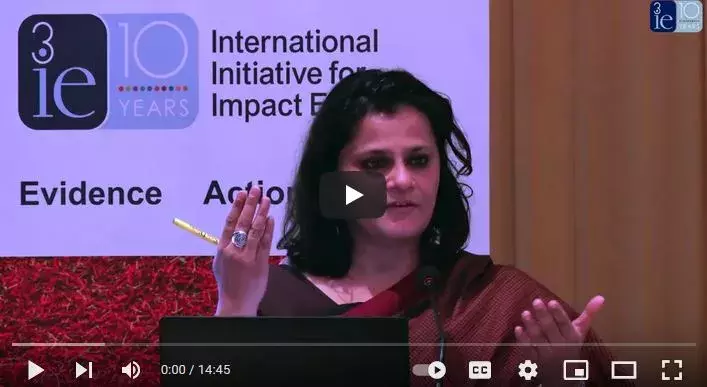Rural India Livelihoods Project
Launched in 2011, the Deendayal Antyodaya Yojana-National Rural Livelihoods Mission (DAY-NRLM) aims to link the rural poor in India to sustainable livelihood opportunities and financial services. In collaboration with the Ministry of Rural Development, Bill & Melinda Gates Foundation and World Bank, 3ie in partnership with Vrutti Livelihood Impact Partners (Vrutti) and Catalyst Management Services (CMS), has been generating rigorous evidence since 2019 on the impacts of this large-scale program on livelihood promotion and social mobilization. In the second phase beginning in late 2022, we’re evaluating the overall program and focusing on its impact on women’s income and assets and on their control over income.
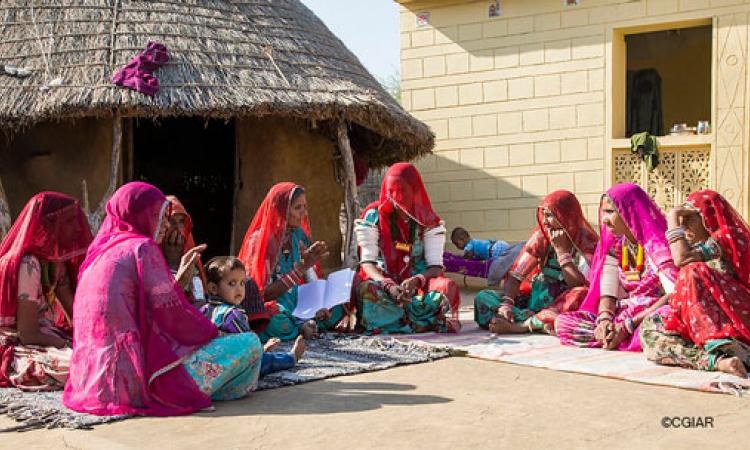
Overview
As key findings from our first impact evaluation continue to inform the design and execution of the DAY-NRLM program, we have initiated the second phase of evidence generation in partnership with Vrutti. The research we produce will include a diverse set of studies that will provide evidence on the overall impact of DAY-NRLM and of a subset of pilots conducted under the program. We aim to generate learnings on pathways, contextual factors and other elements that mediate policy impact. Some of the studies also focus on household and individual level outcomes, specifically the income of women and their share of household assets, consumption, and other measures of welfare.
Under the closely-related Swashakt evidence program, 3ie is also funding the implementation and evaluation of innovative projects to support women's collective enterprises operating in partnership with state rural livelihoods missions.
Phase 2
As part of evaluating the impact of DAY-NRLM, we will be studying the impact of program interventions on household income, consumption, and measures of women’s empowerment. The endline evaluation of one of India’s largest poverty alleviation programs will use the baseline data from 3ie’s 2018-19 evaluation of the same. We will be identifying a set of intensive blocks in which new income and livelihood-enhancing activities have been undertaken since 2018 and a parallel set of non-intensive blocks. The evaluation will be based on a follow-up survey of households in these blocks.
As an extension of the DAY-NRLM program, the Ministry of Rural Development, India, introduced the National Rural Economic Transformation Project (NRETP) in 2019. The second phase of evaluation also aims to assess the impact of NRETP interventions seeking to provide financial and technical support for skills and enterprises, producer collectives, innovative livelihood methods, digital financial inclusion, among others.
Phase 1
In the first phase beginning December 2015, 3ie was commissioned by the Gates Foundation for quality assuring and generating evidence on various aspects of the DAY-NRLM. We conducted an impact evaluation, quality-assured selected evaluations on livelihood interventions and synthesized and mapped the available evidence on the effectiveness and efficiency of group-based livelihoods interventions.
Evaluation
3ie collaborated with the rural development ministry, the Gates Foundation and the World Bank to conduct a large-scale evaluation across nine states where the National Rural Livelihoods Project (NRLP) was implemented. This report underscores NRLP’s impacts on a range of household and individual level economic, social and empowerment outcomes. Its authors also assess the quality of institutions created by the program. This report is listed on the Indian government’s NRLM website as one of the key documents of the National Rural Livelihoods Promotion Society (NRLPS) and can be accessed here.
Links to study outputs
Impact
3ie evaluation continues to informs discussions in the Indian Parliament
In response to a question on SHG loans and results of studies on the impact of the DAY-NRLM, India’s new rural development minister, Giriraj Singh, mentioned 3ie's study and outlined its key findings in the Upper House of Parliament on 30 July 2021. This is the second time the study has been quoted in Parliament. In September 2020, the report was cited in response to a question on the details and impacts of funding provided to SHGs under the DAY-NRLM.
ECWG draws on 3ie’s evidence and gap analysis
The 3ie evidence gap map on group-based interventions has been cited heavily by Evidence Consortium on Women’s Groups (ECWG) to inform their learning agenda and portfolio evaluation of the Gates Foundation’s investments in South Asia and Africa.
Research
In partnership with the University of California, Berkeley, Yale University and Vrutti Livelihoods Resources Centre, 3ie is producing thematic papers using the data collected for the NRLM evaluation.
- Understanding caste-based differences in self help groups: Evidence from India’s NRLM program
- Improving delivery and impacts of pro-poor programs
- The policies that empower women: empirical evidence from India’s National Rural Livelihoods Project
Journal article | Report | Brief - Women’s economic status and son preference: empirical evidence from private school enrolment in India
- Understanding India’s self-help groups: an organizational anatomy of functionality in a district in Madhya Pradesh
A full list of publications is available in the Related content section below.
Activities
 Evidence gap map on group-based livelihood interventions in L&MICs
Evidence gap map on group-based livelihood interventions in L&MICs
This map takes stock of available evidence on the impact of group-based livelihoods programmes on economic, social and empowerment outcomes in low-and middle-income countries.
View map | View report | View blog

Synthesis of livelihoods programmes in L&MICs
This report systematically reviews existing evidence from group-based livelihoods interventions in L&MICs with the objective of answering what works, how, why and for whom.

Process and impact evaluation of a rural development programme in Bihar
3ie has conducted a process evaluation and an impact evaluation of the Women’s Advancement in Rural Development and Agriculture (WARDA) programme, which focuses on household economic welfare, as measured by income levels and women’s empowerment. Technoserve, JEEViKA and the Gates Foundation collaborated to provide technical assistance on this intervention, develop a multi-year roadmap to form and facilitate smallholding women farmers’ producer groups.
View process evaluation report | View media article

Can collectives help overcome challenges facing small and marginal farmers in India?
This brief summarises findings from a literature review that 3ie commissioned to understand how and whether farmer collectives have achieved their stated aims, and to analyse factors affecting their performance. This is part of a wider initiative to build and consolidate evidence on group-based livelihood initiatives in India.
News
- This Ideas for India article, co-authored by Dr Anjini Kochar, evaluates whether self-help group (SHG) program in Bihar has improved risk-sharing by examining differences in village-level variance of consumption growth. (read in Hindi)
- In this Ideas for India article, Anjini Kochar, C. S. Nagabhusana, Ritwik Sarkar, Rohan Shah, Geeta Singh talk about how financial access impacts women’s decision-making role in households.
- In this Ideas for India article, Chandan Jain, Krishna Kejriwal, Ritwik Sarkar and Pooja Sengupta analyze caste-based differences in self-help groups within the NRLM program.
- This Indian Express article recaps a discussion on 'Women Collectives, Changemakers from the ground up' in which Dr Anjini Kochar spoke about financial inclusion. The panel discussion was held as part of the IE THINC Third edition.
- In this Hindustan Times article, Dr Anjini Kochar examines the reasons behind the low and declining labour force participation rate of women in India.
- In this Hindustan Times article, Dr Anjini Kochar explains the persistence for son preference, particularly in private school enrolments in rural India.
- In a recent IndiaSpend article on the impact of COVID on women's collectives, Dr Bidisha Barooah talks about what needs to change in the existing program design.
- A new issue brief on ten years of the NRLM published by the Observer Research Foundation, cites 3ie’s evaluation and other work on self-help groups.
- An IndiaSpend article contextualizes 3ie's evaluation evidence and explores how NRLM, in particular women's SHGs, boost household income.
- In this Indian Express article, 3ie staff write about the barriers to effective implementation of farmer-producer companies.
- In an article for the Financial Express, Dr Anjini Kochar explains how the NRLM can help transform women's lives.
Other activities | In addition to these, activities we also collaborated with JEEVikA (Bihar Livelihoods Mission) on a management information system of a sanitation program and conducted some formative research to inform the implementation of Project Mesha, a community-based program for goat rearing. For queries about this work, please write to info@3ieimpact.org
Additional reading | Compiled list of World Bank resources on rural growth
Events
- Asian Evaluation Week, 13 September 2023 | Watch Additional Secretary, MoRD present on Building resilience and Accountability: Motivating Policy Makers to use knowledge and evaluative evidence (download slides)
- Financial Inclusion Week 2021, 1 November | Improving last-mile delivery of financial services and welfare programs
- India Rural Colloquy, Transform Rural India Foundation, August 2021 | Watch recorded event on women’s collectives and rural economic empowerment
- Livelihoods India Summit, January 2021 | Watch recorded event on the way ahead for NRLM
- Livelihoods India Summit, January 2021 Watch recorded event on empowering women in rural India
- 3ie Evidence Dialogues, October 2020 | Watch recorded event on women’s economic empowerment
- Evidence-informed policymaking for rural transformation, January 2020 | Watch recorded sessions
